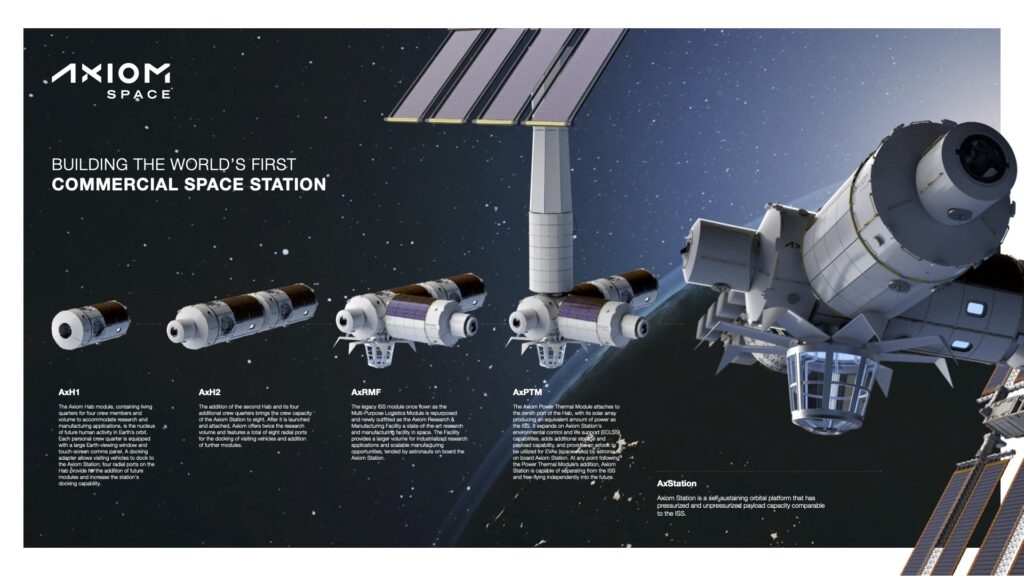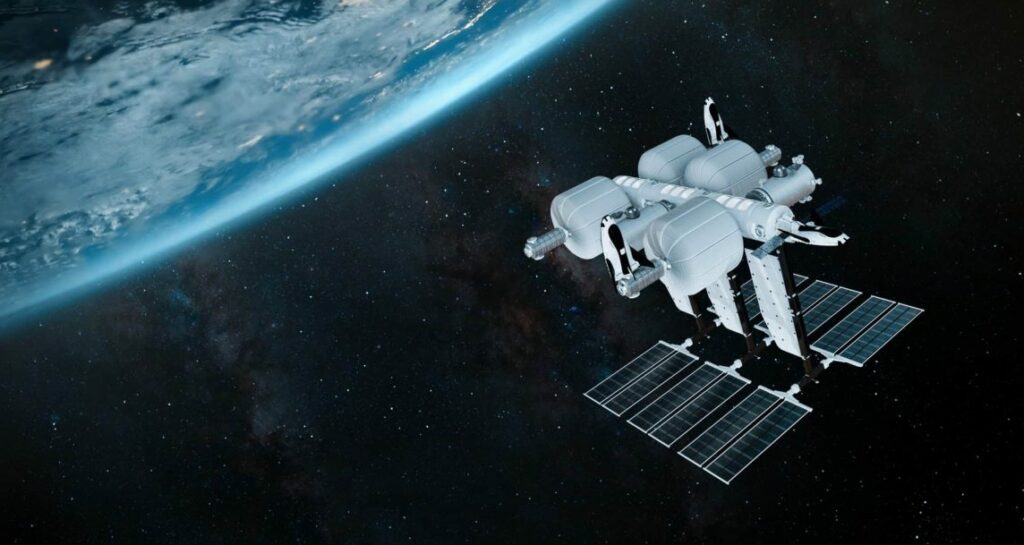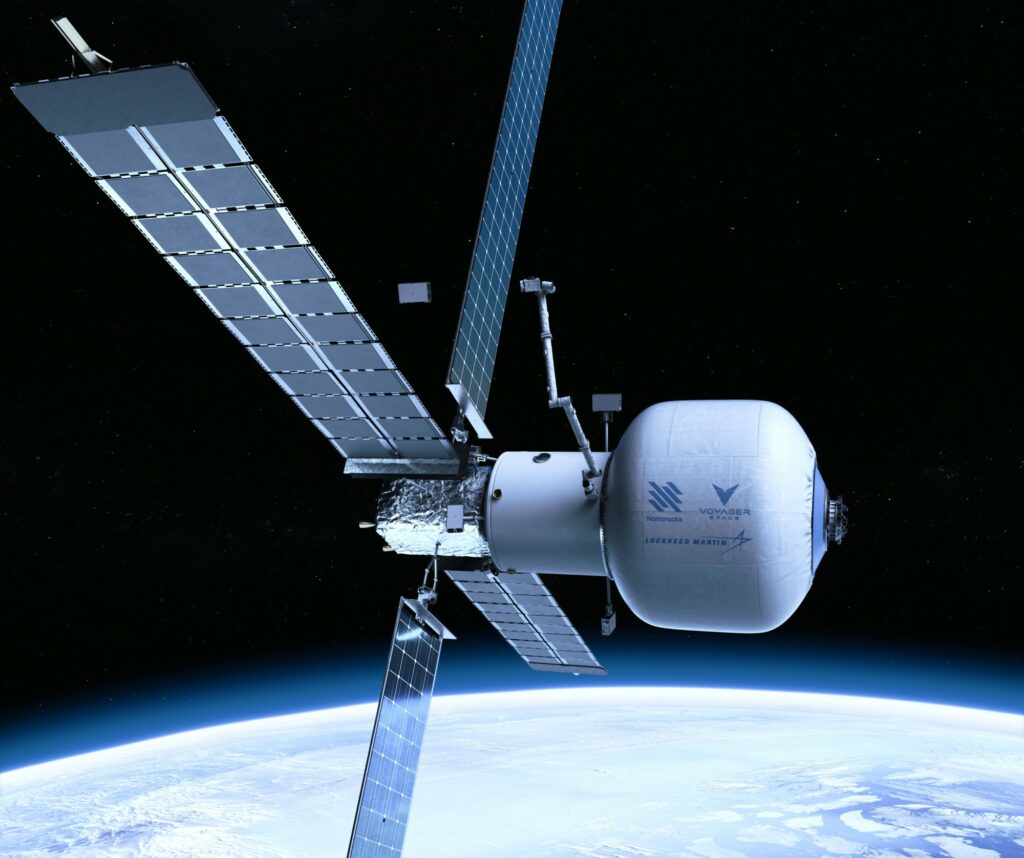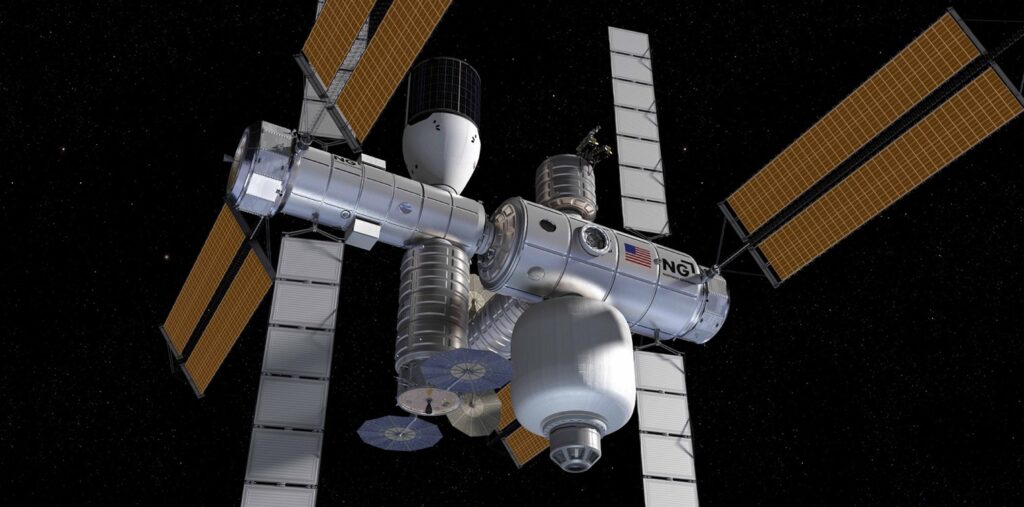Background
For the past several years, there has been much hullabaloo regarding proposed private space stations. Yet several current proposals seem much more substantive than chiefly aspirational proposals in the past. That the International Space Station (ISS) has less than one decade of expected life remaining has accelerated both investment as well as government interest and funding. Reduced launch costs provide a further foundation for the tangibility of such proposals.
The meaning of “private” is rather muddled. Parts of the International Space Station have been build by private firms, yet no one would call the government-operated ISS private. Yet, extensive government funding for a space station is insufficient to overcome the private descriptor. That a station will be owned and operated by private firms, despite chiefly being funded by governments is apparently sufficient for the private descriptor, even though governments are still on the hook for funding and legal liability for possible damages caused by that station.
There have been numerous proposed private space stations that failed for lack of funding and other reasons. However, with ISS reaching the end of its lifetime, and with governments setting their sights closer towards the Moon (e.g. the Lunar Gateway station), there has been strong impetus by G7 governments to strongly encourage (with funding and friendlier policies) the development of one or more private space stations in low Earth orbit. This isn’t Apollo-sized funding, which has been reserved instead for the Space Launch System (SLS). A “new space” approach might be able to lower the cost of such a station from hundreds of billions of dollars to just several billion, and perhaps even hundreds of millions for the initial core elements (propulsion, power, habitat). Despite the caveat that most of this will be government-funded, it is a time of exciting possibilities.
There are several proposed private space stations that already have potentially awarded funding in excess of $100 million. Nevertheless, there are many plans for private space stations. This article will review them, and discuss their status and key scenarios for the next several years.
What’s Up There Now?
There already are human-tended private “space station” facilities already in space, attached to ISS. Bigelow Aerospace provided an actual inflatable BEAM module to the International Space Station. It was used for testing and storage, but it worked and is still in orbit, though Bigelow as an enterprise has substantially reduced operations. Nanoracks has sent up the Bishop airlock module to ISS. It includes an airlock and room for experiments. It is operational and Nanoracks is a lively venture. It’s not a space station, but this technology could become part of a private space station.
What Could Be Up There Soon?
Axiom will be sending a private, substantially NASA-funded module to ISS. This module could be detached from ISS to form an initial module of a stand-alone private space station.
What Could Replace ISS?
It is expected that that ISS will endure operational until 2024 and hoped to remain operational until 2030. So which proposed standalone private space stations could credibly be in orbit within the next two to seven years? What will be the characteristics of those stations. Of special interest to Sustainspace, what novel and advanced life support technologies or approaches will be utilized?
While acknowledging the many proposals over the years for private space stations, we will examine well-funded current proposals. Well-funded generally means at least $100 million has been potentially awarded in private investment and government contracts. Some of the government funding has been awarded under NASA NextSTEP programs, covered previously by Sustainspace in Space Habitats for Lunar Gateway.
Axiom Station
NASA awarded Axion Space a NextSTEP I contract for an ISS module in February 2020 with a maximum potential value of $140 million. Although Axiom was not awarded an independent space station contract, this module could possibly be detached in the future as part of own standalone space station.
The proposed Axiom standalone space station has a “crew quarters + research and manufacturing capabilities … A late 2025 launch of the first section” is projected” (Axiom).
Major Elements
- Hab One
- Hab Two
- Research & Manufacturing Facility
- Power Thermal Module
Further information
https://www.axiomspace.com/axiom-station
Orbital Reef
The Orbital Reef space station is being proposed by a consortium of aerospace companies, lead by Blue Origin. NASA awarded Blue Origin $130 million under the agency’s Commercial Low-Earth Orbit Destination program to “formulate and design commercial low-Earth orbit destination capabilities suitable for potential government and private sector needs” (NASA 2021). NASA awarded the agreement in December 2021″. https://www.orbitalreef.com/news/sdr-milestone
Orbital Reef has passed its system definition review by NASA (see also . The target is for Orbital Reef to be in Earth orbit in second half of this decade.
Chief Partners
- Blue Origin
- Sierra Space
- Boeing
- Redwire
Further information:
Starlab
The Starlab space station is proposed by a partnership of aerospace companies lead by Nanoracks and Lockheed Martin. Nanoracks already has the Bishop Airlock module in orbit attached to the International Space Station. Lockheed has already developed the Orion human space capsule.
NASA awarded Nanoracks LLC $160 million under the agency’s Commercial Low-Earth Orbit Destination program.
Partners:
- Nanoracks
- Voyager Space
- Lockheed Martin
Major Elements
- Power/propulsion
- Airlock module
- Inflatable module
Further Information:
https://nanoracks.com/starlab/
Northrop Grumman station
Northrop Grumman’s proposed space station is unnamed, but it could be a variation of Northrop Grumman’s Lunar Gateway power and HALO core modules with later additions.
NASA awarded Northrup Grumman Systems Corporation $125.6 million under the agency’s Commercial Low-Earth Orbit Destination program.
“The station will have the ability to support four permanent crewmembers initially, with plans to expand to an eight-person crew and further capability beyond that. The station is designed for a permanent presence of 15 years.” (Northrup Grumman 2021)
Despite being a traditional aerospace contractor, Northrop-Grumman is very down to business. In essence, they will be building two stations (Lunar Gateway and LEO), so there should be some economies of scale and reuse of know-how and IP. This endeavor is positioned on their website as more of a “pay-to-spay” facility rather ran an aspirational venture for the love of space. Hence the usual details (such as planned modules) aren’t well-publicized. Yet if they get continued funding, bets are on that they will deliver.
Partners
- Northrup Grumman
- Thales Alenia Space (possible, based on Lunar Gateway)
- Maxar Technologies (possible, based on Lunar Gateway)
Facilities
- Crew quarters
- Science
- Up to six docking ports
Further Information
- https://www.northropgrumman.com/space/commercial-space-station/
Other Possibilities
There are a few “under the radar” possibilities for private space stations to be in orbit in the next few years.
SpaceX Starship
Over in left field, the SpaceX Starship could provide enough volume in space to match that of ISS. There are no published plans to use Starship as a private LEO space station, but if other endeavors fail, it would not be surprising for Starship to fill in, relatively quickly, if the US government is willing to pay for it.
Sierra Space Dreamchaser + Shooting Star module
Somewhat under the radar, and originally billed as a Dreamchaser cargo attachment, Shooting Star can also function as a standalone outpost. The Defense Innovation Unit has contracted with Sierra Space to use Shooting Star as an unmanned space outpost. It can be pressurized. A Shooting Star in combination with a Dreamchaser spacecraft could function as a modest space station.
Whimsical? Blue Origin—Orbital Amazon Distribution Center
Will Blue Origin place an Amazon distribution center in orbit? Highly desired products could be rapidly delivered in small landing capsules to anywhere in the world for those willing and able to pay. When will this happen? Keep a careful eye on those Amazon order delivery options!




